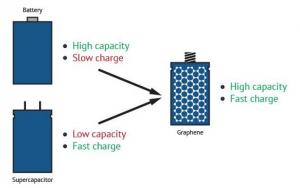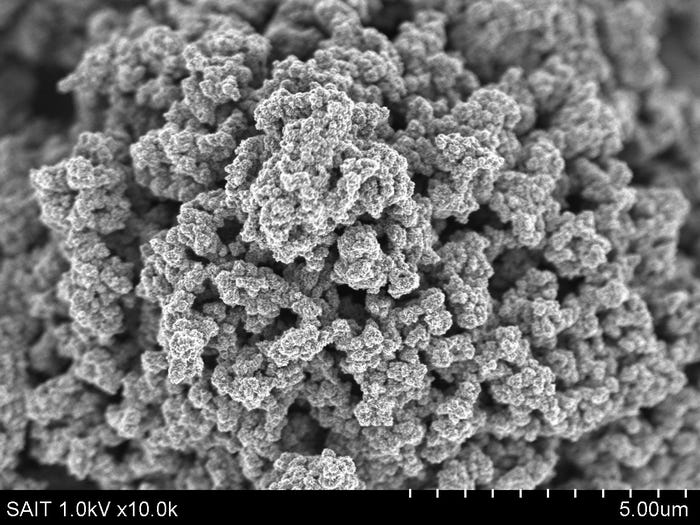Samsung will release a smartphone powered by new graphene battery technology
Samsung will release a smartphone powered by new graphene battery technology that can fully charge in under 30 minutes in 2020, or possibly 2021, according to prolific gadgets leaker Evan Blass on Twitter.
Today’s smartphones powered by traditional lithium-ion batteries can typically fully charge in about an hour and a half. The fastest charging I’ve heard about is Samsung’s 45W charger for the Galaxy Note 10, which the company says can fully charge the phone in an hour. At this stage, Samsung’s claim is still a claim, and it has yet to be tested.
In his tweet, Blass said: “Lithium-ion batteries are … suboptimal. Samsung is hoping to have at least one handset either next year or in 2021, I’m told, which will feature a graphene battery instead. Capable of a full charge in under a half-hour, they still need to raise capacities while lowering costs.” Businessinsider.com August 2019
Samsung Develops Battery Material with 5x Faster Charging Speed
Recently, a team of researchers at the Samsung Advanced Institute of Technology (SAIT) developed a “graphene* ball,” a unique battery material that enables a 45% increase in capacity, and five times faster-charging speeds than standard lithium-ion batteries.
The breakthrough provides promise for the next generation secondary battery market, particularly related to mobile devices and electric vehicles. News.Samsung.com Nov. 2107
Graphene batteries combine the advantages of both batteries and supercapacitors
While there are certain types of batteries that are able to store a large amount of energy, they are very large, heavy and release energy slowly. Capacitors, on the other hand, are able to charge and discharge quickly but hold much less energy than a battery. The use of graphene in this area, though, presents exciting new possibilities for energy storage, with high charge and discharge rates and even economical affordability. Graphene-improved performance thereby blurs the conventional line of distinction between supercapacitors and batteries. Graphene-info.com

Graphene batteries will have the heat problem
If a battery having a high energy density (Wh per cubic volume), it will require a strong force to hold up the energy, the internal resistance.
The Power dissipation of a battery during charging is equal to the square of the charging current multiply with the internal resistance (I2R)

Even with the same internal resistance, 5 times charging current means 25 times more power dissipated on the battery during fast charging.
Samsung announces what caused the Galaxy Note 7 to overheat and explode
Samsung says bad battery design and a rush to release an updated version of the Galaxy Note 7 caused some of the devices to overheat and explode.
Samsung ended up recalling all Note 7 phones and canceling the product altogether.
Conclusion
There is no magic in Physics. You just can’t have a Lithium-ion battery with all-round performance such as fast charging, lightweight, high energy density, and long cycle life.
You have to decide which parameters are more important and make a trade-off’s. Otherwise, the Galaxy Note 7 catastrophe will repeat again.
The author has 30 years of experience in the Lithium-ion battery industry from the laptop application, electric vehicle, to large energy storage.
To learn more about Lithium-ion batteries, please visit everspring.net

